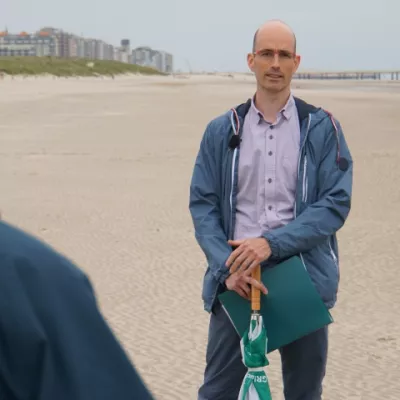Dunes: a source of fresh water
Coastal defence and water scarcity are two hot topics within the scope of climate change. Consequently, there is great interest in hydrogeology, the study of groundwater. Hydrogeologist Dieter Vandevelde explains:
“Where the dunes are narrow, as is the case along the coast between Zeebrugge and Blankenberge, the near future will bring challenges. Rising sea levels will result in more seepage in the hinterland. Groundwater resources are a system of interconnected vessels, with the dunes serving as a buffer. That is why the width of the dunes is so important. If they are too narrow, salt water seeps into the soil instead of fresh water.”
The TOPSOIL project is a European partnership to protect groundwater resources against climate change. “Within this scope, we investigate how we can increase the freshwater lens (Editor's Note: fresh water floats on salt water). We mapped the entire Belgian coast from a helicopter in 2017. On the basis of this map, we started several concrete pilot projects on the west coast. It was found that if we raise a dune by 1 centimetre, the freshwater lens increases by 40 centimetres. This is a factor of 1 to 40.”
Read more about the topics Renewable Energy and Fresh Water Production, Coastal Protection and the Use of Mineral Resources.

